Pork skin jelly, known as “pí dòng” in Chinese cuisine, is a beloved delicacy cherished for its gelatinous texture and mild, savory flavor. This traditional dish, often served during festivals or family gatherings, is crafted by simmering pig skin until its collagen dissolves into a rich broth, which then solidifies into a wobbly, translucent jelly upon cooling. Yet, for home cooks and culinary enthusiasts alike, a persistent question lingers: Should you use cold water when preparing pork skin jelly? This article delves into the chemistry, culinary traditions, and practical tips surrounding this question, offering a comprehensive guide to achieving the perfect consistency and clarity in your homemade pork skin jelly.
The Role of Water Temperature in Collagen Extraction
To understand whether cold water is essential, one must first grasp the science behind collagen, the protein responsible for the jelly’s structure. Collagen is a triple-helix protein abundant in animal connective tissues, including skin, bones, and cartilage. When heated, collagen undergoes denaturation—a process where its tightly wound strands unravel into individual chains called gelatin. Gelatin, when dissolved in liquid and cooled, forms a network that traps water molecules, creating the characteristic jiggle of pork skin jelly.
The critical factor here is how collagen is extracted from the pig skin. Using cold water versus hot water initiates different chemical reactions. When pig skin is submerged in cold water and gradually heated, the collagen fibers have time to unwind slowly. This slow simmering allows for a more controlled release of collagen, preventing the protein from breaking down too rapidly or unevenly. In contrast, starting with hot water might shock the collagen, causing it to contract before fully dissolving. This could result in a less cohesive gel or a grainy texture, as the proteins clump together instead of dispersing evenly.
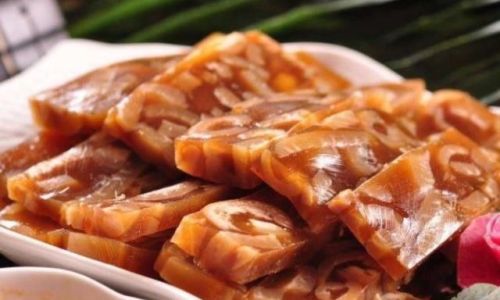
Traditional Wisdom vs. Modern Convenience
Culinary traditions often prioritize patience and precision, and pork skin jelly is no exception. Many traditional recipes insist on beginning with cold water, arguing that it ensures clarity and a smoother mouthfeel. By starting cold, impurities such as excess fat and scum rise to the surface as the water heats, making them easier to skim off. This step is crucial for achieving a pristine, translucent jelly free from cloudiness or off-flavors.
Modern adaptations, however, sometimes advocate for hot water to expedite the cooking process. While this might save time, it risks compromising the jelly’s quality. Rapid boiling can cause the pig skin to toughen, as the outer layers cook faster than the inner layers, creating a barrier that hinders collagen extraction. Additionally, the sudden heat might cause the proteins to coagulate prematurely, leading to a less gelatinous final product.
The Case for Cold Water: A Step-by-Step Breakdown
-
Preparing the Pig Skin:
Begin by thoroughly cleaning the pig skin, removing any residual hair or fat. Cut it into strips or small pieces to maximize surface area, facilitating better collagen release. -
Initial Blanching (Optional):
Some recipes recommend blanching the skin in boiling water for a few minutes to eliminate impurities. However, this step is skipped in strictly cold-water methods to preserve the skin’s natural collagen.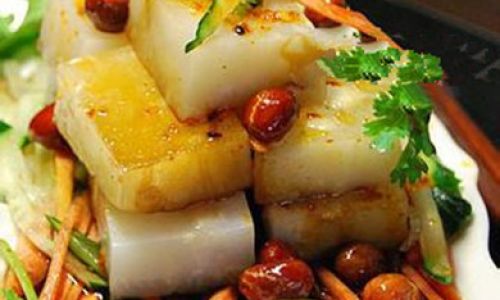
-
Simmering in Cold Water:
Place the pig skin in a pot, cover it with cold water, and bring it to a gentle simmer over low heat. This gradual heating allows the collagen to dissolve uniformly. Avoid boiling vigorously, as this can introduce air bubbles and disrupt the gel’s formation. -
Skimming Foam:
As the water heats, foam will accumulate on the surface. Skim this off regularly to prevent cloudiness. Cold water helps this foam rise steadily, making removal more efficient. -
Seasoning and Timing:
Add aromatics like ginger, garlic, or star anise during the simmering process. The total cooking time ranges from 2 to 4 hours, depending on the skin’s thickness. Taste the broth periodically to adjust seasoning. -
Straining and Cooling:
Once the broth develops a viscous consistency, strain it through a fine mesh to remove solids. Pour it into molds and refrigerate until set.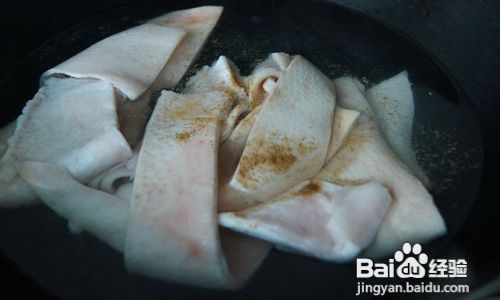
When Hot Water Might Be Acceptable
While cold water is generally recommended, there are scenarios where hot water could be used without catastrophic results. For instance, if the pig skin has been pre-soaked in cold water for several hours to soften it, starting with hot water might still yield a decent gel. However, this method requires meticulous attention to prevent overcooking. Additionally, some chefs combine techniques: blanching in hot water to remove impurities first, then simmering in cold water for optimal collagen extraction.
Troubleshooting Common Issues
-
Cloudy Jelly:
Caused by impurities or emulsified fat. Use cold water to ensure impurities rise gradually, and skim diligently. -
Weak Gel:
Insufficient collagen extraction. Simmer longer, or increase the pig skin-to-water ratio. -
Tough Texture:
Overcooking or high heat. Maintain a gentle simmer to keep the skin tender.
-
Lack of Flavor:
Underseasoning or insufficient aromatics. Enhance the broth with soy sauce, rice wine, or herbs.
Cultural Variations and Innovations
Pork skin jelly is not exclusive to Chinese cuisine. In Europe, similar dishes like aspic or head cheese rely on collagen-rich cuts, often cooked in stock made from bones or meat. While these recipes sometimes use hot water or even pressure cooking for efficiency, the principle of slow collagen extraction remains consistent. Some modernist chefs even experiment with gelatin sheets or agar-agar to stabilize the jelly, though purists argue these shortcuts lack the depth of flavor from natural collagen.
Health and Nutritional Considerations
Beyond its culinary appeal, pork skin jelly offers nutritional benefits. Collagen is rich in amino acids like glycine and proline, which support skin elasticity, joint health, and gut lining integrity. The dish is also relatively low in fat if excess skin fat is trimmed before cooking. However, its sodium content can rise with added seasonings, so moderation is advised for those monitoring their salt intake.
Conclusion: Balancing Tradition and Practicality
The debate over using cold water in pork skin jelly ultimately hinges on prioritizing texture, clarity, and flavor. While cold water adheres to time-tested methods that yield superior results, hot water can be a compromise for those short on time. The key takeaway is that patience rewards the cook with a delicate, lustrous jelly that melts on the tongue—a testament to the alchemy of slow cooking and respect for ingredients.
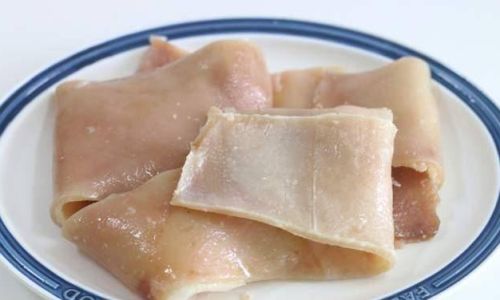
Whether you’re a traditionalist swearing by the cold-water method or a modernist experimenting with shortcuts, understanding the science behind collagen extraction empowers you to adapt recipes to your needs. So, the next time you embark on making pork skin jelly, consider the humble role of water temperature—it might just be the secret ingredient to elevating your dish from ordinary to extraordinary.
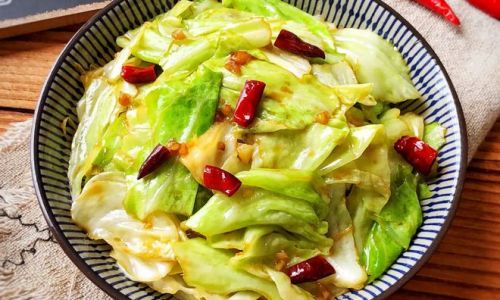
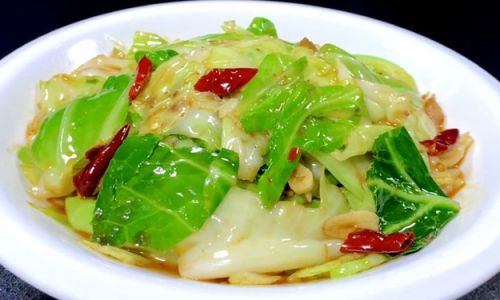

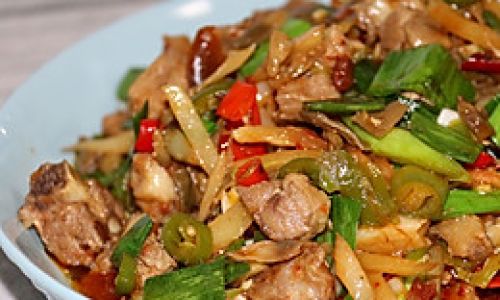
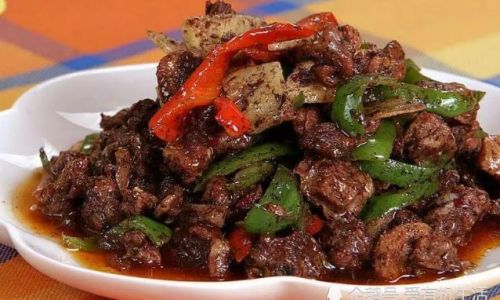
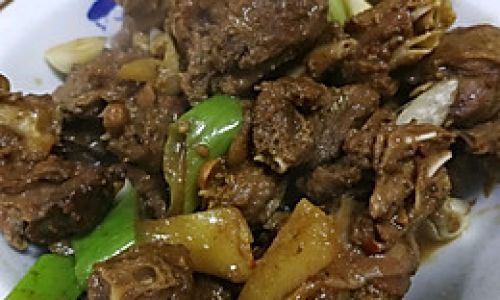
0 comments